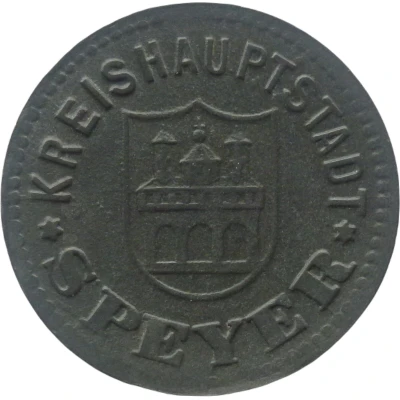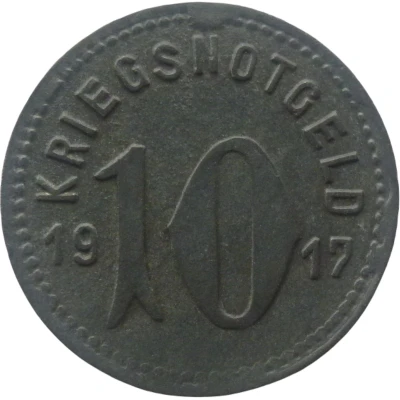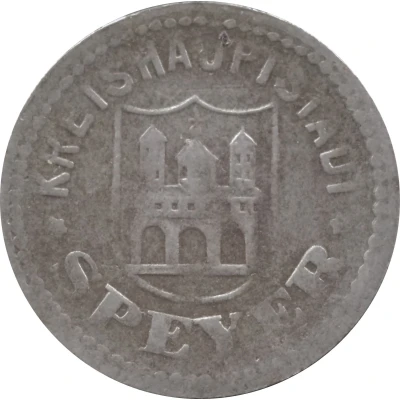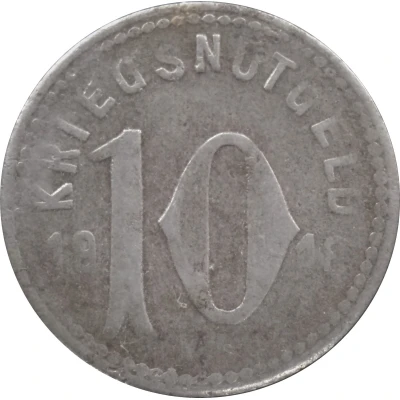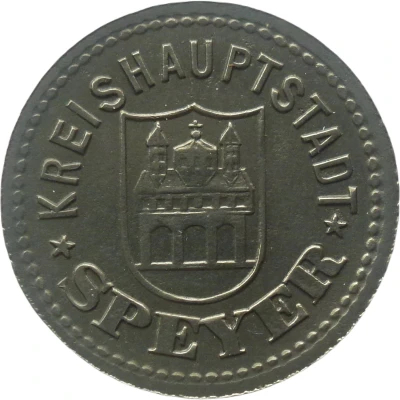
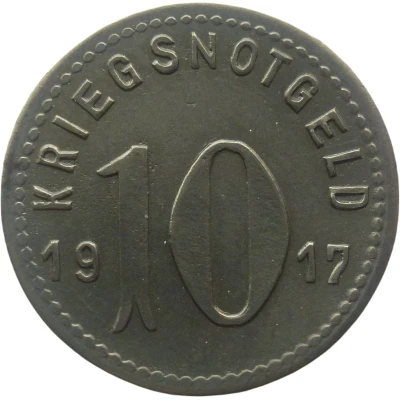

© Willem63 (CC BY-NC-SA)
10 Pfennigs - Speyer
1917 year| Iron | 2.4 g | 20.4 mm |
| Issuer | City of Speyer (notgeld) (Federal state of Bavaria) |
|---|---|
| Emperor | William II (Wilhelm II) (1888-1918) |
| Type | Standard circulation coin |
| Year | 1917 |
| Value | 10 Pfennigs (10 Pfennige) (0.10) |
| Currency | Mark (1914-1924) |
| Composition | Iron |
| Weight | 2.4 g |
| Diameter | 20.4 mm |
| Thickness | 1.1 mm |
| Shape | Round |
| Technique | Milled |
| Orientation | Medal alignment ↑↑ |
| Demonetized | Yes |
| Updated | 2024-10-04 |
| Numista | N#107313 |
|---|---|
| Rarity index | 82% |
Reverse
Pearl rim, legend half circled above denomination dividing date
Script: Latin
Lettering:
KRIEGSNOTGELD
10
19 17
Edge
Plain
Comment
Issuing body: [Stadt, Rheinpfalz].Interesting fact
The 10 Pfennigs - Speyer 1917 coin from the City of Speyer in the Federal State of Bavaria, made of iron and weighing 2.4g, is an interesting piece of notgeld, a type of emergency currency issued during times of economic crisis. Notgeld was used in Germany during World War I and the inflationary period that followed, and it was often issued by local communities and cities. The Speyer 10 Pfennigs coin is a rare example of a notgeld coin made of iron, as most notgeld coins were made of paper or cardboard. Its iron composition makes it stand out among other coins of its time and adds to its unique historical significance.
